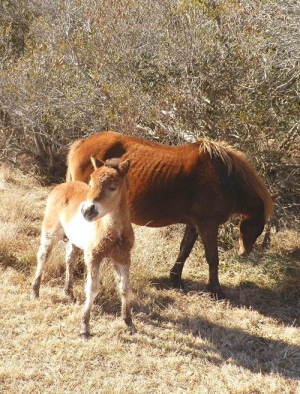
ASSATEAGUE — Local residents, visitors and fans of the wild horses on Assateague will get the opportunity later this month to learn more about the groundbreaking contraceptive program for the barrier island’s most famous residents, which was the first of its kind anywhere used to control the populations of wild animals.
The Assateague Island Alliance, the non-profit friends group of the Assateague Island National Seashore, on March 22 is hosting an overview of the contraceptive program started decades ago to control the population of the wild horses on the barrier island.
Dr. Jay Kirkpatrick, a scientist and researcher who pioneered the program on Assateague nearly three decades ago, will be the guest speaker at the event at the Environmental Education Center at 11 a.m.
The fertility control program used to manage the population of wild horses in the Maryland district of the barrier island was the first of its kind anywhere. Beginning in 1986, the program has been the first to show that fertility control could be applied to free-ranging wildlife remotely and the entire reproductive cycle could be monitored without capturing the horses.
Assateague was the first to use a completely new approach for monitoring genetics without requiring blood samples from the animals. Assateague was also the first to develop an effective proactive public education program that has been wildly successful for decades. All of the techniques are now used extensively worldwide, but they all started on Assateague back in 1986.
In the interest of managing the size of the herd, which, if left unchecked would overtake the barrier island and gobble up the very resources the wild horses need to survive, the National Park Service began the contraceptive program for the mares in the herd. The mares are injected with a non-invasive contraceptive to prevent multiple births in an effort to maintain and ultimately shrink the size of the herd to its manageable threshold. In the interest of maintaining the gene pool of the famous wild horses, each mare is allowed to birth one foal before being put on the contraceptive program.
A new foal birthed last year brought the size of the current herd to 101, which is just about at the target range of 80- to 100. While three to five foals are birthed in a typical year, an in-kind number drop off due to old age, illness or other natural or man-made factors. The mortality rate is around three to five percent, meaning three to five out of 100 are lost each year to attrition, which coincides with the three to five new foals birthed in a typical year.
